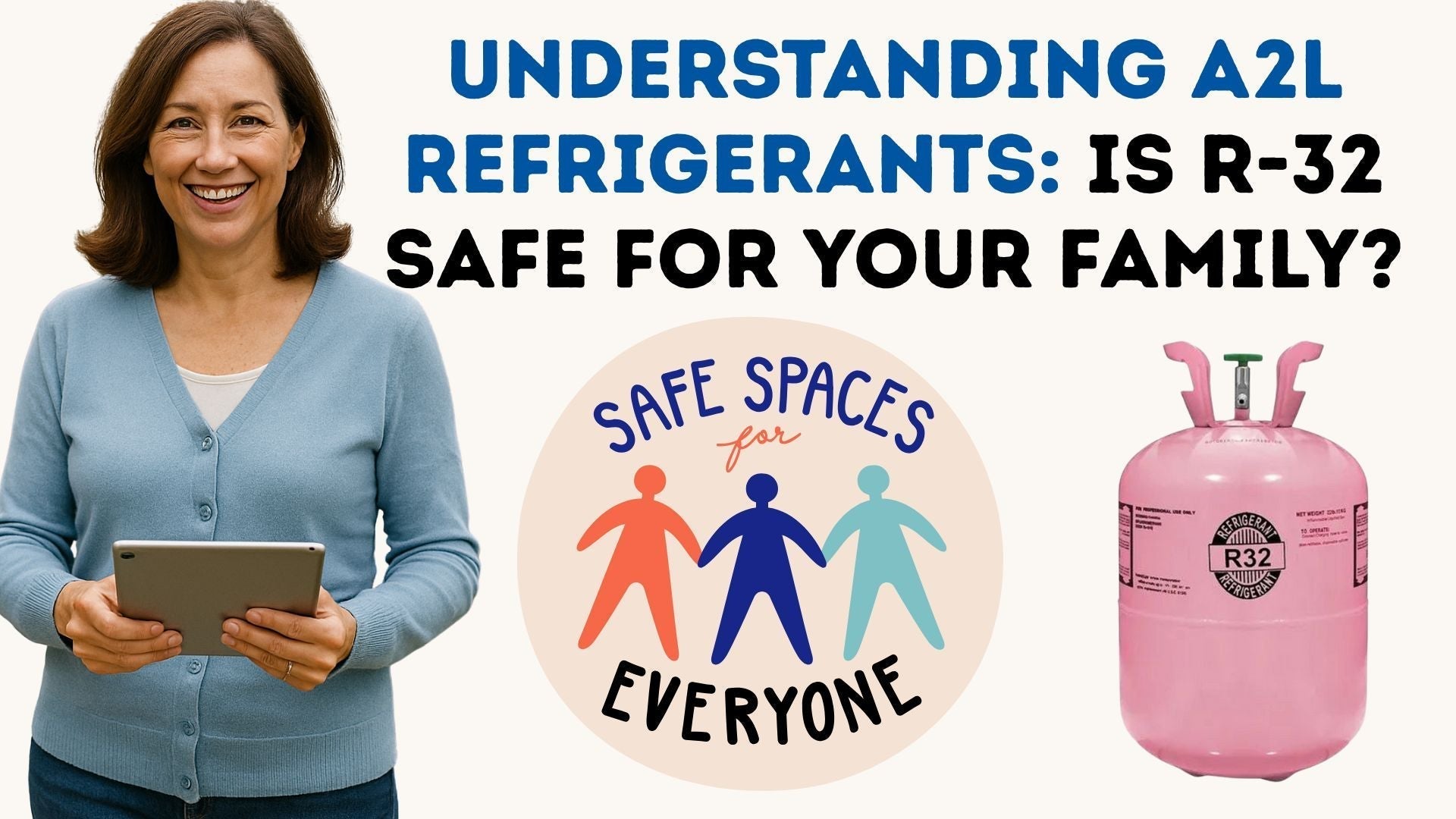If you’ve been researching air conditioners lately—especially energy-efficient models like the Goodman GPCH33631 R-32 unit—you’ve likely run into the term “A2L refrigerant.”
You may have also seen caution labels, flammability warnings, or blog posts raising questions about whether R-32 is safe for use inside or around your home.
Let’s talk about what’s real, what’s hype, and what a smart shopper like you really needs to know.
What Is an A2L Refrigerant?
A2L is a refrigerant classification defined by ASHRAE (The American Society of Heating, Refrigerating and Air-Conditioning Engineers). It stands for:
-
A = Lower Toxicity
-
2L = Mildly Flammable (lower burning velocity than 2 or 3 class refrigerants)
So, R-32 is not highly flammable like propane or butane (which are Class 3). But it is more flammable than older refrigerants like R-22 or R-410A, which were considered “non-flammable.”
Source: Learn more from ASHRAE's A2L FAQ.
Why Are We Using R-32?
Three big reasons:
-
It’s climate-friendly
R-32 has a GWP (Global Warming Potential) of 675—nearly 70% lower than R-410A (which is around 2,088). This helps meet EPA phase-down targets under the AIM Act. -
It’s efficient
R-32 requires less volume to achieve the same cooling, which makes systems smaller, lighter, and more efficient. -
It’s already global
Over 160 million R-32 systems are in use worldwide, especially in countries like Japan, Australia, and much of the EU.
Is R-32 Safe for My Family?
Absolutely—when installed and handled correctly.
Here’s the key: R-32 only poses a flammability risk under extreme conditions. We're talking about a leak in a sealed, unventilated room with an open flame present. For the average homeowner? This scenario is incredibly unlikely.
Modern systems like the Goodman GPCH33631 are designed to keep refrigerant sealed tightly. Technicians are trained and certified to work with A2Ls. Plus, units are thoroughly tested and UL listed to meet North American safety standards.
Source: For more technical insight, see Daikin’s whitepaper on R-32 safety.
What Extra Precautions Should I Take?
If your system uses R-32 (or any refrigerant), you should:
-
Hire an EPA-certified HVAC contractor for installation and maintenance
-
Keep outdoor units well-ventilated
-
Never tamper with refrigerant lines yourself
-
Install carbon monoxide detectors (good practice regardless of AC type)
If you're going the DIY route, consider pre-charged mini splits with R-32—available in The Furnace Outlet’s DIY collection. These are sealed systems designed for homeowner installation without handling refrigerants directly.
How Is R-32 Regulated in the U.S.?
The EPA, UL, and ASHRAE have all cleared R-32 for residential use. In fact, A2L refrigerants are required for most new systems due to federal refrigerant transition laws under the American Innovation and Manufacturing (AIM) Act.
By 2025, nearly all new HVAC systems will use A2L refrigerants.
So, buying a Goodman R-32 unit today isn’t just safe—it’s future-proof.
Final Thoughts from Samantha
I get it—when something new hits the market, especially with a label like “mildly flammable,” we have questions. But as a mom, a homeowner, and a detail-obsessed shopper, I’ve done the research. R-32 is safe, efficient, and sustainable when used as intended.
That’s why I trust systems like the Goodman 3 Ton Horizontal R-32 Air Conditioner—they combine real-world comfort with long-term peace of mind.
Still have questions? Reach out to The Furnace Outlet or check out ENERGY STAR’s refrigerant guidance for additional info.
In my next topic I will cover: How to Maximize Energy Efficiency with Your Goodman R-32 Air Conditioner







